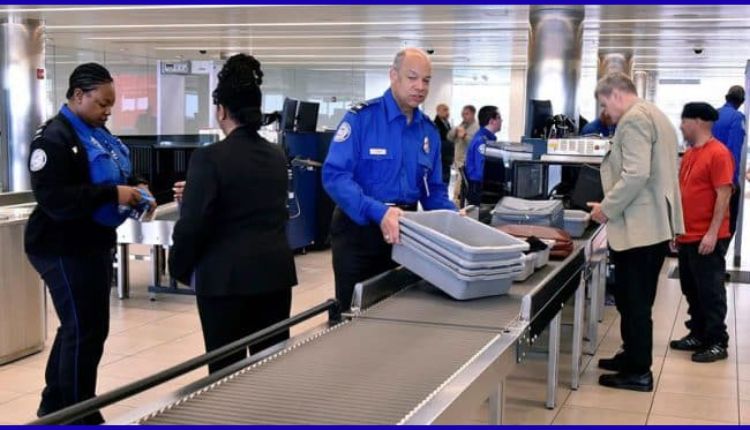Air travel is more accessible than ever, ensuring the safety of passengers has become a concern for airports and governments worldwide. The increasing number of travelers, coupled with evolving threats to aviation security, has necessitated the development of sophisticated airport security systems. These systems aim not only to deter potential threats but also to streamline the passenger experience, ensuring safety without compromising on convenience.
Biometric Technology: A New Frontier
One of the most significant innovations in airport security is the integration of biometric technology. Facial recognition systems, fingerprint scanners, and iris recognition are being implemented to enhance identification processes. These technologies allow for faster verification of passenger identities, reducing wait times at security checkpoints and boarding gates.
Facial recognition systems, in particular, are gaining traction. They work by capturing and analyzing facial features and comparing them to a stored database of known travelers. This not only speeds up the identification process but also enhances security by detecting potential threats more efficiently. Airports like Singapore’s Changi and Dubai International have already adopted these systems, providing a glimpse into the future of airport security.
Advanced Screening Technologies
The traditional methods of security screening, such as metal detectors and X-ray machines, are being supplemented with advanced technologies that provide more comprehensive and accurate results. One notable advancement is the use of computed tomography (CT) scanners. These machines create detailed 3D images of the contents of bags, allowing security personnel to see items from multiple angles without physically opening the luggage.
CT scanners significantly reduce the chances of false alarms and ensure that potentially dangerous items are detected. They also facilitate a more efficient screening process, as passengers can leave their electronics and liquids in their bags, expediting the overall flow through security checkpoints. This innovation has been adopted in various airports across the globe, enhancing both security and passenger experience.
Artificial Intelligence and Machine Learning
Artificial intelligence (AI) and machine learning (ML) are revolutionizing how airports approach security. These technologies analyze vast amounts of data to identify patterns and anomalies that may indicate a security threat. By assessing passenger behavior, baggage movement, and even facial expressions, AI systems can alert security personnel to potential risks in real-time.
Moreover, AI-driven systems can continuously learn and adapt to new threats, making them highly effective in maintaining airport security. The integration of AI with existing security measures allows for a more proactive approach, enabling airports to anticipate and mitigate risks before they escalate.
Smart Surveillance Systems
Modern airport security has also seen the rise of smart surveillance systems equipped with high-definition cameras and video analytics. These systems are capable of monitoring passenger flow, identifying suspicious behavior, and providing security teams with actionable insights. Advanced algorithms can analyze video feeds in real time, enabling quicker responses to potential incidents.
Additionally, these smart surveillance systems can integrate with other security technologies, such as biometric scanners and AI-driven anomaly detection, creating a comprehensive approach to airport security. By leveraging video analytics, airports can enhance situational awareness, ensuring that security personnel are always a step ahead.
Mobile Technology and Passenger Engagement
Mobile technology is also playing a crucial role in enhancing security processes at airports. Many airports now offer mobile applications that provide real-time information on wait times at security checkpoints, gate changes, and other critical updates. This not only improves the passenger experience but also allows travelers to plan their journeys more effectively, reducing congestion and potential security risks.
Additionally, mobile applications can facilitate the delivery of security-related information, such as travel advisories and emergency notifications, directly to passengers’ devices. This proactive communication can help keep travelers informed and safe throughout their journey.
Cybersecurity Measures
As the airport security system becomes increasingly digital, the importance of cybersecurity cannot be overstated. Airports are investing in robust cybersecurity measures to protect sensitive passenger data and critical infrastructure. This includes implementing secure networks, conducting regular vulnerability assessments, and training staff to recognize and respond to cyber threats.
By prioritizing cybersecurity, airports can safeguard against potential breaches that could compromise passenger safety or disrupt operations. This holistic approach to security ensures that both physical and digital vulnerabilities are addressed, creating a safer environment for travelers.
Collaboration and Information Sharing
Enhancing airport security is not solely the responsibility of individual airports; it requires collaboration among various stakeholders, including government agencies, airlines, and international organizations. Information sharing is crucial in identifying and mitigating threats effectively.
Many airports participate in global initiatives to share intelligence on emerging threats, best practices, and innovative security solutions. This collaborative effort allows airports to stay ahead of potential risks and adapt their security measures accordingly. Joint exercises and training programs further strengthen partnerships and ensure that all parties are prepared to respond to security incidents.
Continuous Improvement and Adaptation
The landscape of aviation security is constantly evolving, and airports must be willing to adapt and innovate continuously. Regular assessments of security protocols, technologies, and procedures are essential to identify areas for improvement. Feedback from passengers and security personnel can provide valuable insights into what is working and what requires enhancement.
Investing in research and development to explore new security technologies, while also assessing the effectiveness of existing systems, is vital for maintaining high safety standards. The focus should always remain on balancing security with passenger convenience, ensuring that the travel experience remains enjoyable and stress-free.
In conclusion, the innovations in modern airport security systems reflect the industry’s commitment to enhancing passenger safety. Through the integration of biometric technology, advanced screening methods, AI and machine learning, smart surveillance, mobile tools, and robust cybersecurity measures, airports are better equipped to protect travelers while providing a seamless travel experience. As threats evolve, so too must the strategies employed to combat them, ensuring that safety remains the cornerstone of air travel.






